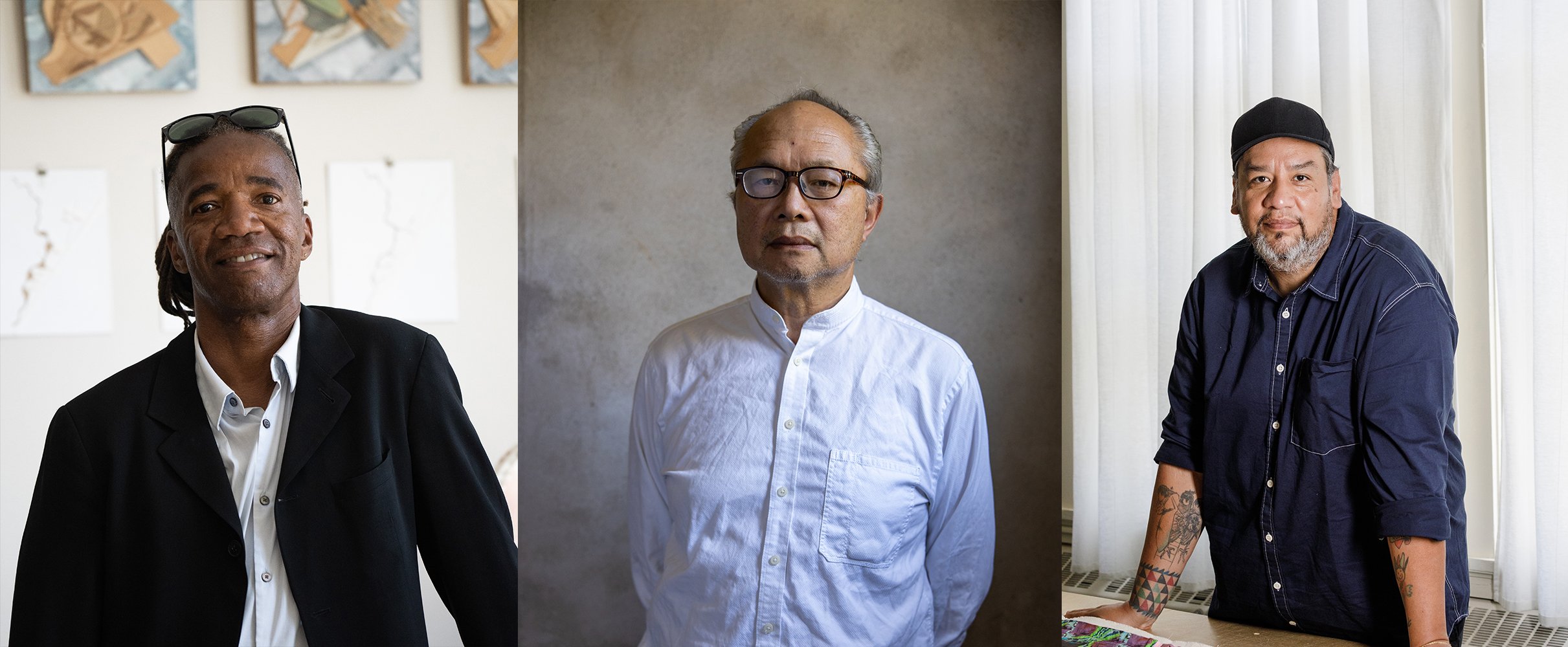
The John D. and Catherine T. MacArthur Foundation announced today that artists Mel Chin, Jeffrey Gibson, Walter Hood, and Cameron Rowland are among the 2019 winners of its prestigious fellowship, known as the “genius grant.”
These artists represent the visual arts category in this year’s crop of 26 fellows, each of whom will be awarded $625,000 in unrestricted grant money, distributed over five years.
“From addressing the consequences of climate change to furthering our understanding of human behavior to fusing forms of artistic expression, this year’s 26 extraordinary MacArthur fellows demonstrate the power of individual creativity to reframe old problems, spur reflection, create new knowledge, and better the world for everyone,” MacArthur Foundation president John Palfrey said in a statement. “They give us reason for hope, and they inspire us all to follow our own creative instincts.”
Cameron Rowland, one of the youngest fellows at age 30, is known for his research-intensive installations that reveal the systemic inequities that underlie our institutions and laws. His celebrated 2016 show at Artists Space, “91020000“, brought together objects built by laborers in New York State prisons who were paid less than $1.15 per hour and sold below market value to municipal agencies by a for-profit company. In a corresponding essay, Rowland wrote about the history of prison labor programs and their exploitative practices, drawing a line between America’s correctional system and slavery.
Jeffrey Gibson in his studio, 2019. Courtesy of the John D. & Catherine T. MacArthur Foundation.
A member of the Mississippi Band of Choctaw Indians, Jeffrey Gibson draws on Native American heritage to make elaborate, hand-made artworks that speak to the shifting spectrum of American identity today. The 47-year-old artist’s output spans wearable garments, sculpture, painting, and video, and often mixes traditional Native American materials such as beads, fringe, and elk hide, with queer references and political messaging.
Mel Chin, 67, has behind him a long career of social-practice projects that vary widely in shape, scope, and subject. In the mid-1990s, Chin surreptitiously snuck coded objects into the background sets of the TV show Melrose Place, glibly hinting at issues that a major television network would never touch, including epidemic drug use, colonial violence, and gender fluidity. In 2017, he launched an elaborate program in which recycled plastic bottles from Flint, Michigan, were turned into clothing, a process that simultaneously gave disadvantaged people in the community jobs.
Mel Chin in his studio, 2019. Courtesy of the John D. & Catherine T. MacArthur Foundation.
Straddling the worlds of architecture, landscape design, and fine arts, Walter Hood builds urban environments that serve as both practical community space and a multifaceted monument to the history of a given area. Hood was tasked with designing the landscape around the new International African American Museum, set to open in Charleston, South Carolina, next year. His plan for the site, where more than a third of African slaves were once forced into the country, features a memorial garden and a tidal pool that reveals an engraving of figures confined on a ship when its water recedes.
The MacArthur award is life-changing for many recipients, and its prestige often amounts to more than just the cash prize. Previous winners include David Hammons (who won in 1991), Cindy Sherman (1995), Fred Wilson (1999), Nicole Eisenman (2015), and Njideka Akunyili Crosby (2017). Last year, artists Julie Ault, Titus Kaphar, and Wu Tsang were awarded the fellowship.